This was published 4 years ago
Love it or not, we're all a bit obsessed with the Brownlow red carpet
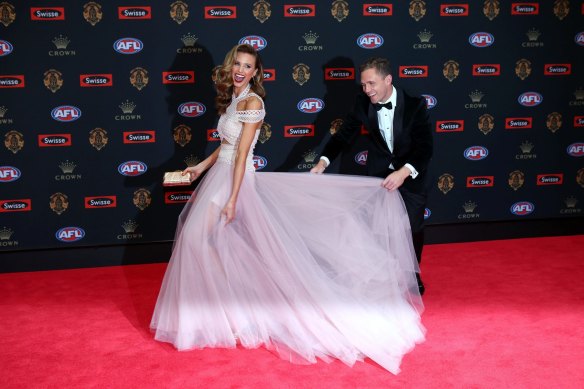
Power couple ... Geelong captain Joel Selwood and Brit Davis on the 2016 Brownlow red carpet.Credit: Pat Scala
In 2000, The Age's then fashion editor, Janice Breen Burns, opined that the gaudy gowns of the late '90s Brownlow Medal – the AFL's annual best-and-fairest award – had been replaced with something (slightly) more sophisticated. "The night once dominated by peroxide and scary cleavages has evolved into a watchable feast of damnably nice frocks," she wrote.
Describing her own turn "as a handbag" at the 2001 Brownlow, the same year Tania Buckley, wife of Collingwood coach Nathan Buckley, wore that "g-string dress", Marieke Hardy wrote in 2010: "In 2001, there is still an element of bogan-related disaster."
Breen Burns, who left the paper in 2012, says she found it intriguing to watch the evolution of the red carpet from "DIY fashion event" to virtual catwalk but laments the "cult of nastiness" that surrounded it for years.
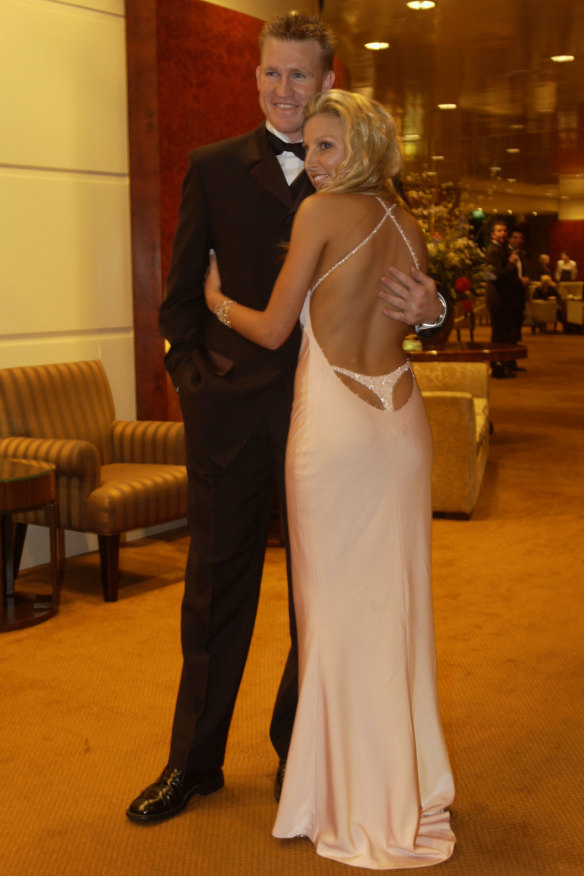
2001: Tania Buckley (nee Minnici), with Nathan Buckley, in the infamous 'g-string dress'.Credit: Robert Cianflone
"The fact is a lot of these WAGs [wives and girlfriends] were just young women, a bit startled in front of the camera," she says. "The look of some of them as they started walking up the carpet and realised it wasn’t the bloke on their arm but them who everyone was looking at."
THE 1990s:
For years, Buckley ruled the Brownlow red carpet, awaiting her successor. And in 2004, she arrived.
The dress that changed everything
Rebecca Twigley, then a 21-year-old model from Perth, arrived on the arm of West Coast’s Chris Judd in a red dress by designer Ruth Tarvydas that plunged so low you could see her belly-button piercing.
In an instant, the Brownlow red carpet changed forever. "We were in the scrum with the football and sports writers ... They were all aghast," says Breen Burns. "She walked in, she looked spectacular."
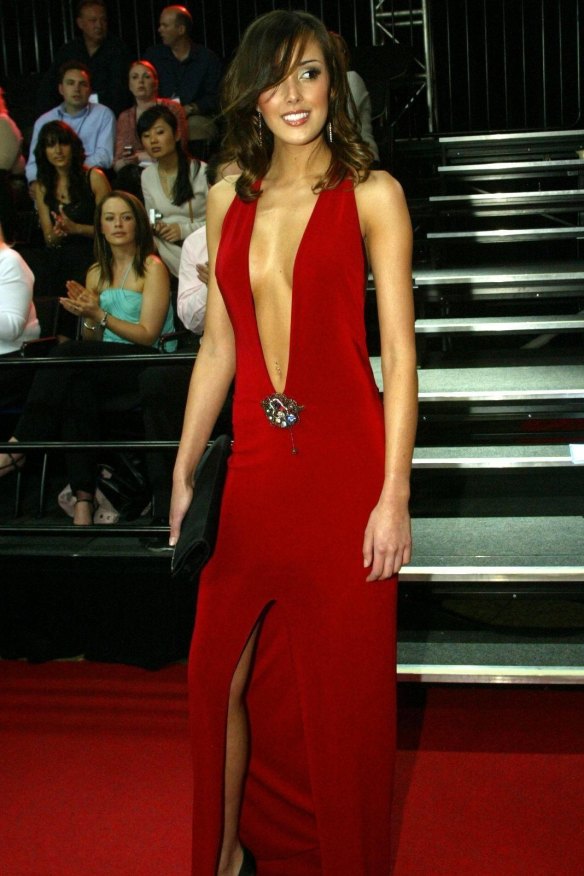
2004: Rebecca Judd (nee Twigley) in the dress that changed everything.Credit: Vince Caligiuri
Former Age sports reporter Samantha Lane, who co-hosted the red carpet television special in 2004 for Ten, has always harboured mixed feelings about the red carpet.
"The red carpet setting, whether it’s at the Brownlow or other sporting events that followed, has typically been framed through ... a male gaze," Lane says. "It’s people gawking on the women, a hotness factor. I think there was a 'hot or not?' list at some point in some publications."
THE JUDD EFFECT:
At its nastiest, the Brownlow coverage included the "burn book", a Powerpoint presentation shared via Facebook that excoriated the players' partners. And few could forget the infamous "rotisserie" of 2011, when host Channel 7 thought it was a good idea to ask women to stand on a revolving platform to offer viewers a 360-degree look at their frocks.
THE NOUGHTIES:
Things got so bad that in 2016, several players' partners campaigned for a #bullyfreebrownlow, while this year, there have been calls to retire the "WAG" label altogether.
"It still rankles when women are asked, 'What are you wearing?', and men are not," says Lane.
A kinder era?
Businesswoman Emma Hawkins, wife of Geelong's Tom Hawkins, says she's been asked her share of good, bad and "lazy" questions on the red carpet over the past eight years. The worst? "When a journalist commented on my bust region straight away and said, 'Is this a risky option?' I simply responded: 'Not really, I don’t really know where else to put them!'
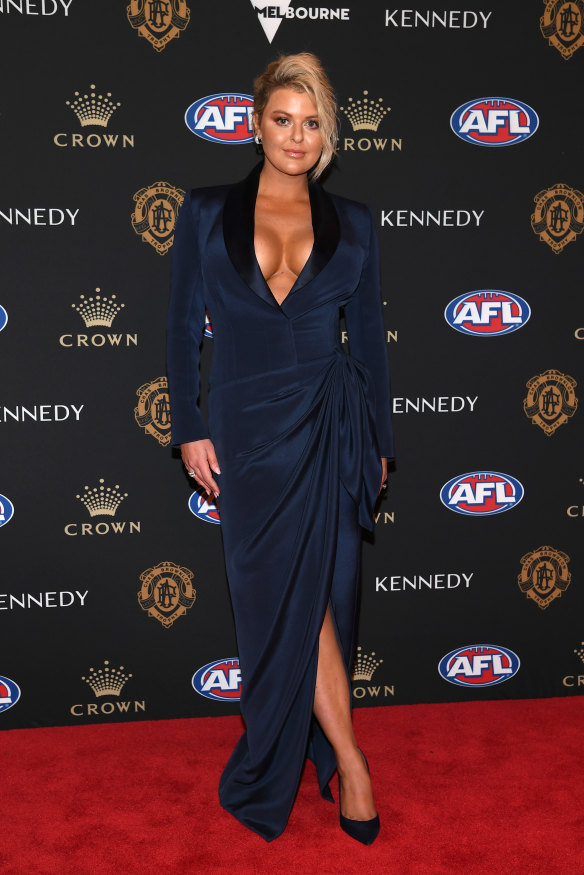
Ask her more ... Emma Hawkins in 2019.Credit: Getty Images
"I actually love it when they ask football questions ... I also love when they ask out-of-the box questions ... The, 'How long did it take you to get ready?' question is so done."
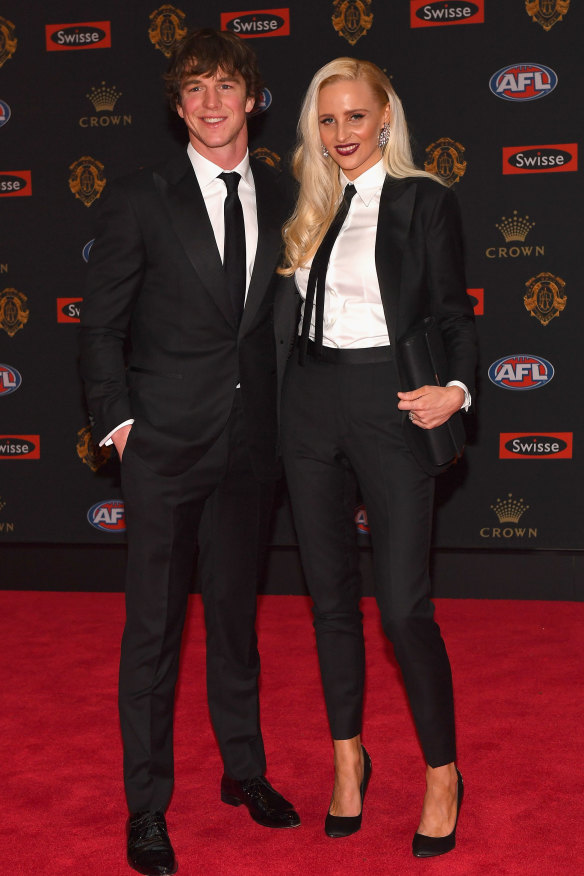
Rewriting the rules ... Liam Picken and Annie Nolan in 2016.Credit: Getty Images
Most agree things have improved. In 2016, Triple J's Hack program turned the tables on red carpet reporting by only asking the players what they were wearing and how long it took them to get ready (the answer in most cases? Less than 15 minutes). And more recently, #MeToo and the creation of the women's AFLW league have also resulted in less objectifying coverage overall, although a lot of the trolling has simply moved to social media.
Journalist Rachel Wells, who covered about 10 Brownlows for The Age from 2001, says there was a distinct shift in the late noughties, when coverage became less about the "shockers" and "more about the fashion and the women themselves".
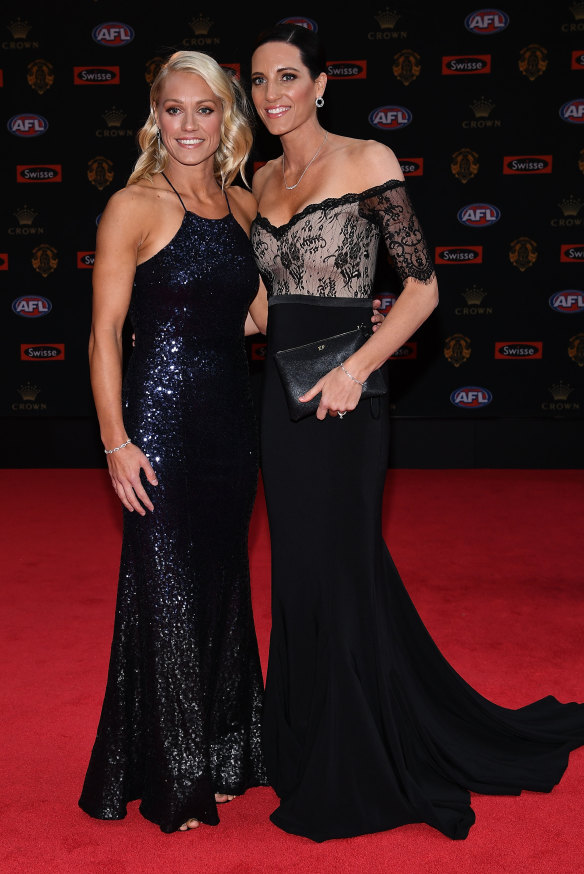
AFLW player Erin Phillips (left) with wife Tracy Gahan in 2017. Credit: Getty Images
From shock-value to chic
In the early 2000s, it was all about Jenny Bannister, Jane Hill and Judd's eventual go-to designer, J'Aton Couture. At more recent Brownlows, names including Oglia-Loro, Con Ilio and Sonia Cappellazzo dominate the best-dressed lists.
THE 2010s:
Cappellazzo says having a dress on the red carpet is a money-can't-buy marketing opportunity that is vital for her mainstay in wedding gowns. Work on most gowns begins a month before and she usually has two or three clients for the night, usually working with celebrity stylist Lana Wilkinson. Generally, the women don't pay for the dresses and they are returned afterwards to be used as samples. The value is in the endless posting (and re-posting) to social media, and, to a lesser degree these days, in newspaper reports.
"We design very quickly with the stylist [based on] who they are, what they wear, the trends, are they pregnant," says Cappellazzo. "It’s very much like a mini wedding. Appointments are quick and fast. The three to four days before are manic."
Wilkinson freely admits that without the Brownlow, "I wouldn't have the career I have." But it's also a credit to women like her that the event has become so elevated, even if that brings both opportunities and massive pressure for all concerned, herself included.
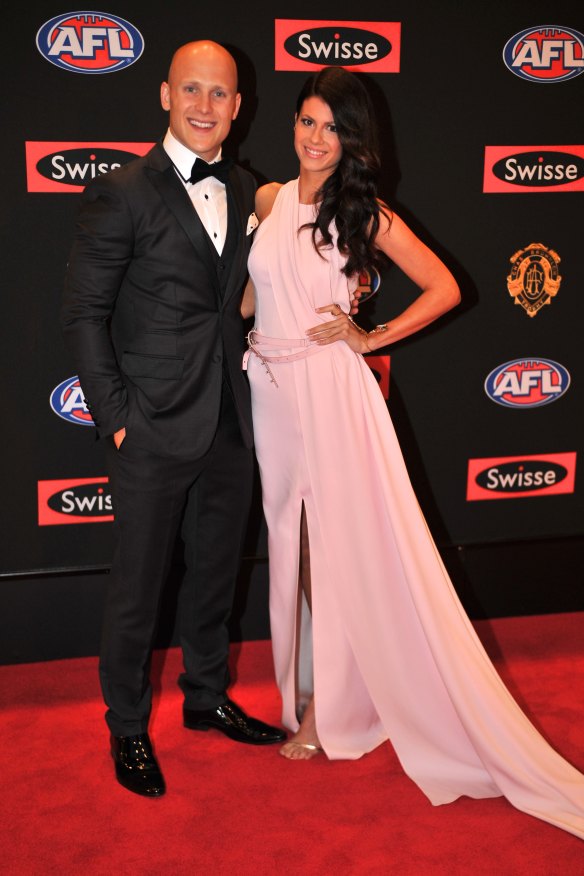
2013: Jordan Ablett (nee Papalia) at her first Brownlow with Gary Ablett Jr.Credit: Wayne Taylor
One highlight was having the wife of a famous US musician "call in" one of the Brownlow dresses she helped conceive. "And then she started following me [on social media]," she says. "It’s not like it’s J.Lo, but I’ll take it. The overseas stylists really watch what we do."
Wilkinson sees her role as part image consultant, part dresser and part protector of women who are often still in their teens at their first Brownlow. She recalls a younger Jordan Ablett, wife of Geelong star Gary Ablett Jr, wearing pale pink Toni Maticevski in 2013. "Jordan would have been a baby, 19 ... And I remember thinking, 'Oh my god, I have to protect this kid [from the critics].' I remember we got 10 out of 10."